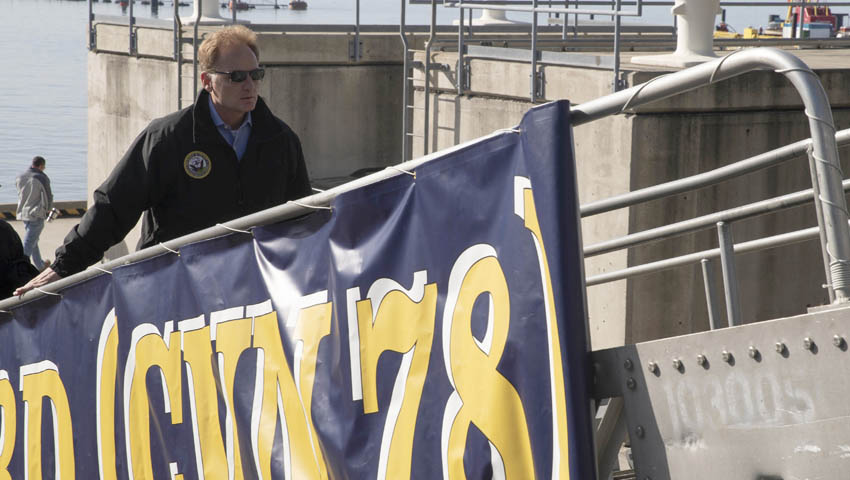Acting Secretary Thomas Modly has drawn together the combined experience and capacity of senior Navy and shipbuilding industry leaders to transition the US Navy’s newest aircraft carrier, the USS Gerald R Ford (CVN 78), into fleet operations as quickly and effectively as possible.
Acting Secretary Modly first called for the summit last month in one of his weekly memos to the integrated Navy and Marine Corps team. The "make Ford ready" memoranda clarified his focus and direction on achieving critical Navy-wide objectives for the Ford team.
In his memo, he stressed that, under his watch, the Navy is going to make ready CVN 78, employing all hands on deck and working as "one team, relentlessly focused" on achieving core tasks under rigid timelines.
Acting Secretary Modly said, "While this is an 'all hands on deck' priority that can only be accomplished through the dedicated efforts of the Ford team, it will also require broad, department-wide encouragement, enthusiasm, and support for our shipmates and industry partners who will be heads down on the tasks at hand."
"We all have a stake in the success of this effort – for the future of our Navy, our national security, and security of the world," he added, stressing the growing importance of the US Navy's carrier force at a time of unprecedented geo-political, economic and strategic competition.
Chief of Naval Operations Admiral Mike Gilday reinforced the emphasis on carriers, particularly the next-generation Gerald R Ford Class, saying, "The Ford Class carrier is the future. It is a phenomenal ship designed to deliver increased capability for the carrier air wing of tomorrow. While good progress has been made over the past several months, together we must keep Ford headed in the right direction – and get her where she needs to be – operating forward at sea to reassure allies, deter adversaries, and protect our national interests around the world."
During the summit, Rear Admiral Roy Kelley, Commander, Naval Air Forces Atlantic (CNAL), and Rear Admiral James Downey, Program Executive Officer Aircraft Carriers, led the briefing to ac ting Secretary Modly and ADM Gilday.
Speaking before more than 50 stakeholders, RADM Downey and RADM Kelley briefed progress to date and the path forward to achieve full ship functionality, training and certifying the crew, ensuring ship material readiness, and exercising the full spectrum of Air Wing operations to successfully transition CVN 78 into Fleet operations.
Collaboration at the "Make FORD Ready" Summit offered a unique opportunity to ensure alignment among more than a dozen military and shipbuilding stakeholders – both in terms of meeting Department of Defense (DoD) strategic objectives and program system integration requirements, from an operational, “on the deck plates” perspective.
Since completing its post-shakedown availability/selected restricted availability (PSA/SRA) in late October 2019, USS Gerald R. Ford (CVN 78) has performed exceptionally well during two successful underway test and training evolutions.
At-sea periods for this first-in-class aircraft carrier are part of a current 18-month phase of operations known as post-delivery test and trials (PDT&T), scheduled to continue through mid-2021.
During this PDT&T, the crew will certify fuel systems, conduct aircraft compatibility testing, exercises the flight deck, and conduct tests to onboard combat systems.
The Gerald R. Ford Class is the future aircraft carrier replacement class for Enterprise and Nimitz-class aircraft carriers. The lead ship, Gerald R. Ford (CVN 78), was commissioned in 2017.
The Gerald R. Ford Class will be the premier forward asset for crisis response and early decisive striking power in a major combat operation. Gerald R. Ford Class aircraft carriers and carrier strike groups will provide the core capabilities of forward presence, deterrence, sea control, power projection, maritime security and humanitarian assistance.
The class brings improved warfighting capability, quality of life improvements for sailors and reduced total ownership costs.
Improvements aboard Ford will be carried forward to the next two carriers of the Ford Class: John F. Kennedy (CVN 79) and Enterprise (CVN 80).
Each ship in the new class will save nearly $4 billion in total ownership costs during its 50-year service life, compared with the Nimitz Class. The CVN 78 is designed to operate effectively with almost 700 fewer crew members than a CVN 68 class ship.
Improvements in the ship design will also allow the embarked air wing to operate with fewer personnel. New technologies and ship design features are expected to reduce watch standing and maintenance workload for the crew. Gerald R. Ford is the first aircraft carrier designed with all electric utilities, eliminating steam service lines from the ship, reducing maintenance requirements and improving corrosion control.
The new A1B reactor, electromagnetic aircraft launch system (EMALS), advanced arresting gear (AAG), and dual-band radar (DBR) all offer enhanced capability with reduced manning. The Gerald R. Ford Class is designed to maximise the striking power of the embarked carrier air wing.
The ship's systems and configuration are optimised to maximise the sortie generation rate (SGR) of attached strike aircraft, resulting in a 33 per cent increase in SGR over the Nimitz Class. The ship's configuration and electrical generating plant are designed to accommodate new systems, including direct energy weapons, during its 50-year service life.
The Gerald R. Ford Class builds upon the Navy's legacy of aircraft carrier innovation, stretching back to the first aircraft carrier, USS Langley (CV-1), and continuing to the present day. The introduction of jet aircraft, angled decks and nuclear power were all innovations that kept the fleet as relevant for Cold War needs as it is today.
Gerald R. Ford continues the aircraft carrier history of innovation and adaptability that will enable her to serve the US Navy for decades to come.






